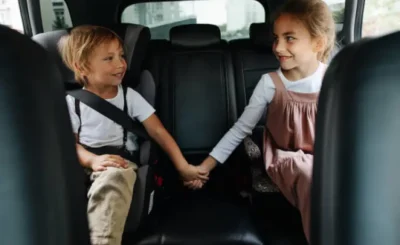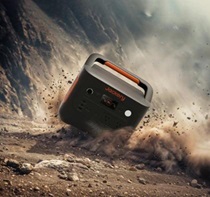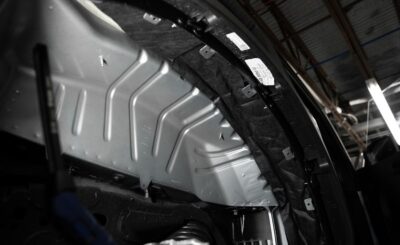In recent years, the world of vehicle customization has taken a bold turn from traditional stripes and flames to fully immersive graphic experiences. Among the many striking themes to emerge, one has carved out a unique niche that’s both eerie and eye-catching: the Chucky car. Inspired by the infamous killer doll from the “Child’s Play” horror movie franchise, the Chucky-themed wrap is turning heads, dominating car meets, and shaking up the automotive scene with chilling style.
But what makes the Chucky car so special? And why are horror-themed wraps becoming such a cult favorite among enthusiasts? In this article, we’ll explore the roots of the trend, the psychology behind horror aesthetics in car culture, the technical side of bringing these nightmare-fueled designs to life, and how the Chucky car became the face of a whole new subculture.
A New Kind of Statement on Wheels
In the world of custom car wraps, making a bold statement is everything. Whether it’s anime (Itasha), cyberpunk, gothic, or even video game-inspired wraps, the goal is to stand out—not just from stock vehicles, but even from other customized rides. And when it comes to standing out, nothing demands attention like the face of Chucky leering from the hood of a muscle car or grinning from the side of a slammed JDM coupe.
The Chucky car is more than just a cool visual—it’s a declaration of individuality, rebellion, and an affinity for the macabre. It plays on nostalgia for horror fans who grew up watching “Child’s Play” and its sequels. For some, it’s a tribute to 80s and 90s pop culture. For others, it’s simply a thrilling way to express an edgy personality.
Why Horror? The Psychology Behind It
Horror has always held a strange grip on the human psyche. From haunted houses to slasher flicks, people enjoy the controlled fear that horror media provides. This fascination spills over into how people decorate their homes—and now, their cars.
Driving a Chucky car isn’t just about aesthetics. It’s about provoking emotion. Fear, surprise, humor—yes, even humor. Because let’s face it, there’s something darkly funny about a child-sized doll with scars, wild red hair, and a butcher knife grinning at you in traffic.
In design psychology, this is known as affective response. When people see a highly emotional or controversial design, they are more likely to remember it, talk about it, and share it—whether that’s on Instagram or at a car show. The Chucky car creates buzz by walking the line between creepy and cool.
Building a Chucky Car: From Idea to Asphalt
Creating a Chucky-themed car wrap is a detailed process that involves several key stages:
1. Conceptualization
It all begins with the idea. What kind of Chucky are we talking about? The original 1988 doll? The stitched-up “Bride of Chucky” version? A blood-soaked, demonic grin for maximum shock value? Artists typically collaborate closely with vehicle owners to develop a concept that balances visual impact with personal flair.
2. Design and Layout
This is where professional wrap designers take over. They build a digital rendering of the car and overlay high-resolution graphics. Key elements include:
- Chucky’s face: often used prominently on the hood or doors.
- Blood splatters or knife slashes: added around the panels for effect.
- Movie logos or taglines: for added authenticity.
- Background elements: like stitched leather textures or dark clouds.
The designer must also accommodate the unique curves and lines of the vehicle, ensuring the wrap fits perfectly and doesn’t distort the imagery.
3. Material and Print
High-quality vinyl is essential for a successful Chucky car. Brands like Avery Dennison, 3M, and KPMF are often used to ensure the print is crisp, vibrant, and durable. The horror palette relies on deep reds, blacks, and skin tones—colors that need top-tier inks and lamination to stay sharp under sunlight and weather.
4. Installation
Wrap installation is a craft of its own. It requires skillful stretching, alignment, and heat application. The most challenging areas are bumpers, mirrors, and curves where the vinyl needs to maintain graphic integrity. Any flaw can throw off the whole illusion, so it’s best left to experienced installers.
5. Finishing Touches
Gloss, satin, or matte laminate can dramatically change the look of the final wrap. A gloss finish makes the colors pop and adds a modern flair. A matte finish leans into the gritty horror vibe. Some owners even add 3D elements—like fake blood drips on the grill or custom red LED lighting—to complete the look.
Who’s Driving These Cars?
Interestingly, the Chucky car isn’t limited to any one demographic. Enthusiasts range from horror fans in their 20s to veteran gearheads who’ve always been drawn to the darker side of car culture. You’ll see Chucky cars in a variety of vehicle types, from Dodge Chargers and Mustangs to Honda Civics and even lifted trucks.
One of the most viral Chucky wraps in recent memory was spotted on a widebody Challenger, complete with glowing red underglow and a lifelike Chucky doll strapped into the passenger seat. Social media exploded with reactions—some were terrified, others fascinated—but nearly everyone shared it. That’s the power of visual storytelling on wheels.
The Chucky Car in Pop Culture and Events
Horror-themed cars, especially Chucky cars, are now common sights at car shows, especially around Halloween. Events like SEMA, Wekfest, and Spocom have all featured heavily themed builds, with many going viral on TikTok and Instagram.
Some owners even build their social presence around their vehicles, turning their cars into mobile brands. A Chucky car becomes the centerpiece of content—short skits, cinematic reels, reaction videos—all leveraging the shock value and nostalgia of the design.
Tips for Creating Your Own Chucky Car
If you’re thinking of building your own horror-themed ride, here are a few tips to get started:
1. Know Your Vision
Are you going for scary, campy, or somewhere in between? Deciding this early will guide your design decisions.
2. Choose a Professional Designer
Don’t skimp on design. A skilled wrap designer will know how to blend horror imagery with your car’s dimensions in a way that flows and fits.
3. Go All In
Commit to the theme. Accessories like custom seat covers, LED lighting, themed license plates, or a Chucky figure on the dash can elevate your wrap from cool to unforgettable.
4. Maintenance Matters
Horror wraps are high contrast and prone to showing scratches and sun damage if not maintained. Use wrap-safe soaps, avoid automatic car washes, and store the vehicle out of direct sunlight when possible.
Final Thoughts: Is the Chucky Car Just a Fad?
Absolutely not. While trends in the car world come and go, horror as a genre has lasting appeal. People will always be drawn to what excites, scares, and amuses them. As car customization becomes more artistic and expressive, niche styles like the Chucky car are likely to evolve and grow.
We’re witnessing the fusion of cinema, nostalgia, and automotive artistry. What was once considered just a toy or Halloween costume is now dominating streets and shows in vivid, full-wrap glory. Whether you’re a hardcore horror fan or simply love pushing the boundaries of style, the Chucky car is proof that creativity has no limits.
And if you ever find yourself at a red light with a Chucky car next to you—smile. Just don’t look too long… he might smile back.








